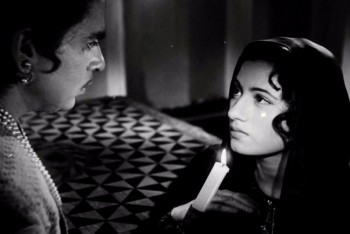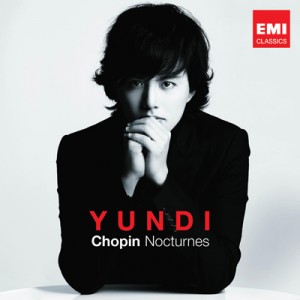Raavan (2009, dir. Mani Ratnam). Aishwarya Rai’s Ragini remains too little marred by abduction, rock-scaling, near-drowning, food refusal, traumatic witnessing, being dragged from cave to pit to cave and so on. The camera still fondles her face as it might any cover-girl—confirming this face to be as fascinating as that of some infant cyborg. Abhishek Bachchan’s Raavan is a convincing maniac, however, in whom a certain fathomlessness carries forward the fantastical Ramayanan subtext. His hands chopping about his face, acting out the knives in his head: a brilliant, dramatically efficient tic.
Raavan’s forest is vitally extrajurisdictional space. The forest villagers protect him, want to be left alone—and here the bleeding heart may think: alas, the Indian state has trammeled upon these people’s bare but honest subsistence lives. But how suspiciously convenient, for any state in fact inadequate as provider, when the people do not want to be civilized—or therefore subsidized. This is the story’s social pathos: as Ragini asks her police-chief husband Dev (played by Tamil screen stalwart Vikram), “Is he Raavan or is he Robin Hood?”
Thunderous zombie-like rain-dance to the song that assaults whatever haute Delhi may think of them: the best song-dance of the film, perhaps of any popular Hindi film of the last decade. Abhishek may not have the liquid flow of Hrithik Roshan’s dance moves—e.g., all cartilage in Krrish opposite J.-Crewish Priyanka Chopra—but ever since Refugee, and even throughout Kabhi Alvida Naa Kehna, he has grown peerless in transmitting compressed, punctuating intensity.
However gorgeously cinematographed, Ratnam’s obsession with waterfalls, rainfall, and rotational views, and concession to gratuitous violence during climactic scenes, only venn-diagrams this film with Bollywood’s triter image-sectors. The directorial triumph lies rather in an insistence that Raavan’s attraction to Ragini stay indefinite, as a sort of inter-species gravitation: she pure wife, he bog demon, though each susceptible to the pull of another life. (He is thus a different animal from the Beast or Frog who’s actually an incarcerated prince, say, and from the altogether irredeemable Alberich lusting after Rhinemaidens.) There is a wondrous delicateness to Raavan’s seeming monstrosity; he contemplates possessing her, yet never seems merely to want to ravish her—and yet there’s also nothing chaste about his heated state. That honor-bound Dev cannot imagine forms of close encounter other than the coital, cuckolding kind—and so exacts his crude, cruel revenge—may leave the viewer rather depressed for being human.








